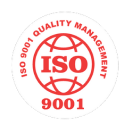How Implementing Vibratory Finishing Can Deliver Cost-Effective Production Gains

SM3 Manual unload machinery
Manufacturing never stands still. Expectations are higher, deadlines tighter, and competition is fierce. For businesses working with metal parts, automotive components, or precision-engineered products, the way those items are finished can make all the difference. A rough surface or a sharp edge isn’t just a cosmetic issue — it can be the reason a customer looks elsewhere.
One method that’s gained ground in recent years is vibratory finishing. It’s not new, but more companies are starting to see just how much time and money it can save. At Sharmic Engineering, we see it transform production lines time and time again.
Vibratory finishing works by gently moving components in contact with specially designed media. The vibration does the hard work: removing burrs, smoothing edges, polishing surfaces. What’s clever is the consistency it delivers. Whether you’re finishing metal, plastic, or ceramic components, you’ll end up with results that look and feel professional — without needing someone to stand over the machine for hours on end.
We offer a range of equipment to suit different needs. Some businesses opt for vibratory bowls, either automatic or manual unload, depending on their workflow. Others find trough machines better, especially when larger or more delicate components are involved. Where real speed is needed, centrifugal finishing can make short work of demanding tasks. And, for flexibility, there are single-phase tumblers and rotary barrels. The right choice depends entirely on what you’re trying to achieve.
There’s another side to vibratory finishing that’s sometimes overlooked: the difference it makes to your people. Manual polishing and deburring is tiring work. It takes time, skill, and focus. When you introduce vibratory finishing, you free up experienced operators for more skilled tasks — the sort of work that adds real value to the business. You also cut down on the risks of inconsistency that often creep into manual work, especially over long shifts.

Automatic grease canisters to reduce maintenance, 12 month clock.
There are clear cost savings too. Not just through lower labour requirements, but because vibratory finishing tends to be kinder on consumables. With the right setup, your media and compounds last longer, and you won’t be paying for constant replacements. The parts themselves are more consistent, meaning fewer reworks, less waste, and happier customers.
It’s also worth mentioning flexibility. Many vibratory finishing systems can be set up to run overnight, or during quieter shifts, maximising your use of plant and equipment. You’ll be surprised how much extra capacity you can unlock without extending your hours or hiring more staff.
At Sharmic Engineering, we take pride in helping businesses find the right vibratory finishing solution. It’s not just about selling machines. It’s about understanding your production line, your challenges, and your goals. That’s why we offer tailored advice, a broad choice of consumables — including plastic, ceramic, and porcelain media — and the option to outsource work to our subcontract finishing team if needed.
If you think vibratory finishing might fit into your business, or if you’re simply curious to learn more, we’d be happy to have a conversation. Sometimes, a small change in the way you work can lead to bigger improvements than you expect.

VRX & VRK Automatic unloading machine control panels

